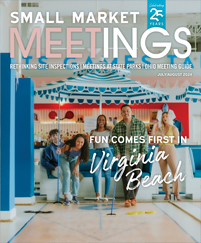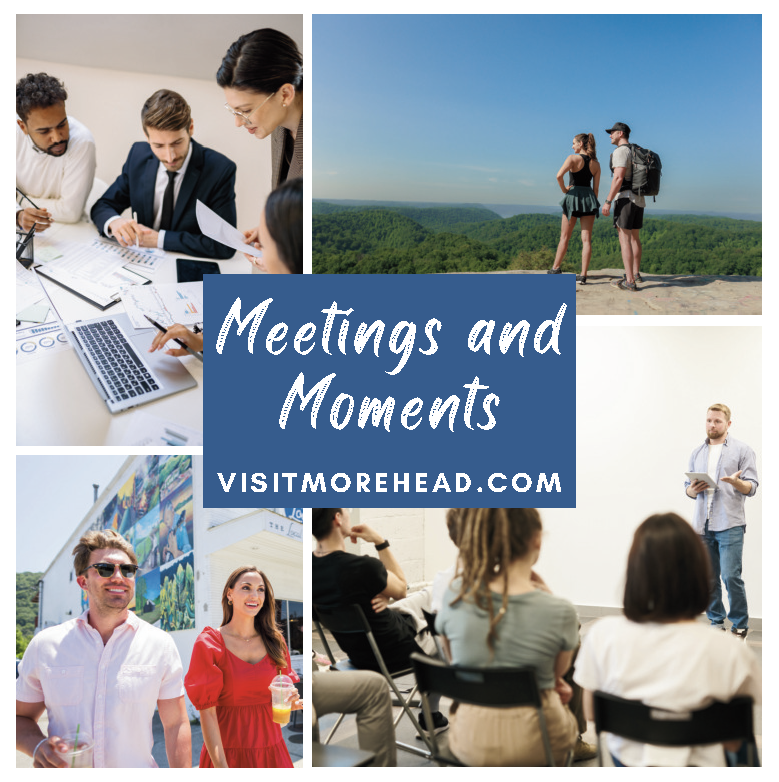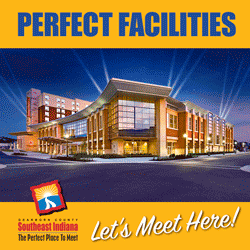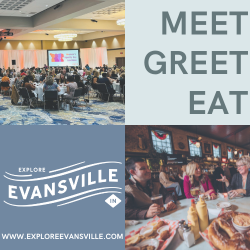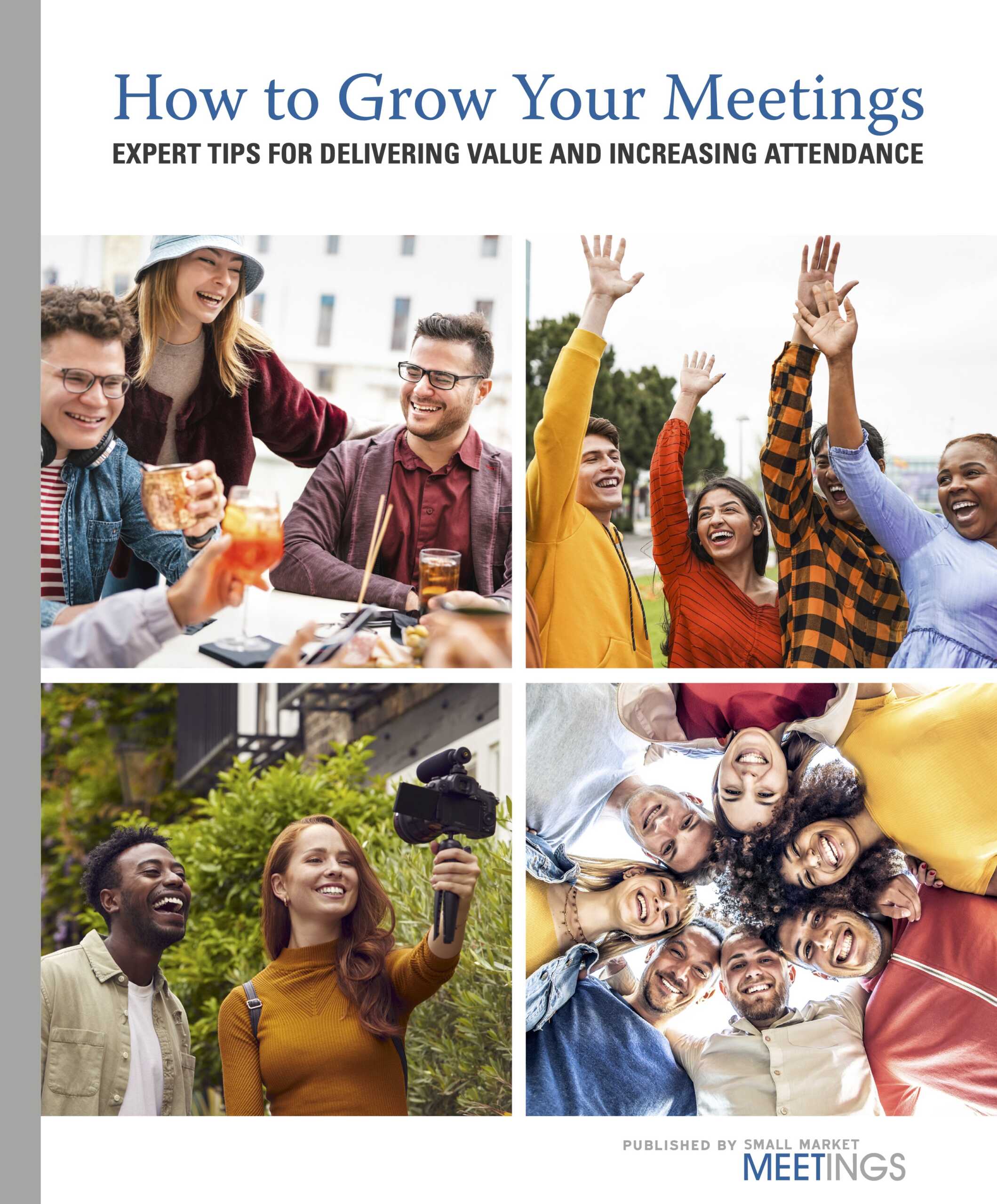We have hacks and tips for everything in life. Why NOT share 23 of them as we surge into the next half of the year? The umbrella is big. We are all under it together.
We must share our successes and struggles as we prance through the evolving landscape of the meetings industry one expensive gallon of coffee at a time.
These are my top tips and trends that will help YOU have a successful meeting in 2023.
Learn from my mistakes and my bloody nose garnered from many falls. When you’re done reading, I double-dog dare you to share yours as well.
Your voice is important.
Below are my top 23 hacks for a successful meeting in 2023. I’ve personally seen these work from failure or wild successes during more than 150 meetings over the past year.
Communication: Hotels and venues are in a much better position today with staffing and labor than they were in 2022, however, they are still working diligently on training and servicing the breakneck speeds of our meetings. Communication with your vendors is key. Flip that to the other side and consider that your team and meeting stakeholders have changed, and may have never met, or done a meeting so communication with them is of equal importance.
- Communicate with your vendors: Ask about staffing pars or any areas to which they might be concerned. See where you can supplement your own staff or volunteers to keep the service levels high. Recently, one of my client planners scheduled a pre-meeting 4 months prior to arrival with the front office manager and hotel operations leader. She wanted to assess the staffing at the front desk and ensure there were no lines at check-in. Together — through several meetings — they worked on an arrival experience plan where the planner communicated arrival times in advance so the hotel could staff for it and the planner had company volunteers mingling in line to keep attendees occupied, fed, and hydrated. They also shared the agenda for the rest of the meeting while in line so not only were attendees distracted-they were informed.
- Ask Questions-Make No Assumptions: Don Miguel Ruiz famously says “Don’t make assumptions.” and “We make an assumption, we misunderstand, we take it personally and we react in a non-favorable way.” None of this is necessary. Don’t assume things will be the way they were. Look at your meeting as a brand new event you’ve never planned before and build from there.
- Keep Your Internal Teams Informed — early on: We are rusty and still have blindspots. Communicate the plan for securing a space, planning the event, marketing the registration, and onsite activities — as early as possible to key stakeholders at your organization. Although they are not professional planners, they may have insight and ideas that help you reshape the new meeting. Make it clear you’re the one planning and final decisions come down to you, of course, but keeping teams informed early on may inform you of potential pitfalls.
- Create a conference task force-small group of people within your organization: This is a volunteer-based crew of people from varied departments. You should lead the charge and have bi-weekly meetings several months leading up to the conference. Our attendees have changed drastically over the last three years. As a planner, you want to be aware of these changes whether they are in diet, programming cadence, accessibility needs or more. An outside perspective is good and will help you have the pulse of the attendee.
- Solicit programming and needs feedback from external teams: Your external voices are just as important as your organization’s internal voices. Conduct very short surveys or focus groups with your sponsors, long-time attendees, or key exhibitors to ask them what is important to them NOW to get out of the conference. Many times they are closer to the pulse of the needs than your internal sources. This can be a quick team call or a quick survey but do it as soon as you select a venue so you have that important information as you begin programming.
- Pay Attention To Pricing: Everything is more expensive now. Confirm everything you can upfront in writing and don’t assume the prices won’t change. Supply chain and labor in the food industry are still an issue. Plan for at least a 30% increase from the previous year in your food and beverage budget. The hotels and venues don’t set the prices of their suppliers and don’t have much control over them. Your best action is to plan for higher pricing everywhere. Since most of our program budgets are tight, look for other areas where you can reduce costs knowing food/beverage and room rates are going to be higher.
- Read EVERY SINGLE WORD of your contract: Contracts have changed coming out of Covid. We all learned a lot and many new clauses reflect those lessons. Look for extra words in your Force Majeure clause. Look for exclusions such as a hotel/venue giving you a discount on food and beverage that doesn’t include alcohol. Pay attention to words like “non-refundable” or “unassigned space names” or “service charge is subject to change without notice” Push back where you need to but be sure to comb through every single word. Most hotel chains have changed terms so don’t assume your contract this year will be the same as last year.
- Mind Your Monies: Deposit schedules have increased. Venues are asking for more upfront than they ever have before. Hotels and venues will work with you if you ask them and find a mutual solution. For example, if they are asking for a large deposit upfront at contract signing, ask them if they will accept it in tiers — in the year for the year — and spread that out over a 6-month period. That way they still get the deposit they are looking for but it’s not such a hefty chunk out of your budget at one time.
- Credit Checks: This is a big one and I’ve seen this over and over again over the last 16 months. If you are applying for direct billing and will be submitting a credit application, get it spelled out in the contract specifically what happens if you are not approved for direct billing, exactly what is due, and when. Get it in writing that the hotel will perform the credit check between contract signing and 60 days prior to arrival. The hotel will inform you at least 45 days prior to arrival if more money is due. I have had many clients recently get an alert from the Hotel that their “additional” and “large” deposit in the hundreds of thousands of dollars is due a couple of days before the meeting. This is the WORST thing a vendor can do to a planner during crunch time. If for some reason the credit isn’t approved, we can fix it, if we have time but we are strapped with time within the week of arrival.
- Double Check Everything: Using that credit example above, I had a client not approved for credit. I scheduled a call with the hotel finance director. I simply asked “Can you tell me the name of the entity and business address you used when applying for credit?” and low and behold, they used the wrong company name. The declined credit to my client because another company with bad credit was used to run credit. If you get declined, don’t assume it’s accurate, ask the question, take the time, and double/triple check everything.
- Audio Visual: In the old days, we used to leave the AV part to the deeper planning phases. Don’t do this anymore. If possible, provide your past usage to the onsite AV team for a proposal in advance. Negotiate that pricing upfront and once you get to where you want to be, use that proposal as Exhibit A of the contract for reference. The hotel and venue AV world is the wild wild west right now. You can be in the same market and have equal hotels with the same exact AV company and the services are the same but the pricing is wildly different. Ask for AV menus at the same time you ask for banquet menus and floor plans. Look at this thoroughly. Ask questions. If the venue sales partner doesn’t know the answers to the questions, ask to speak to the AV director to better understand the pricing. Also, if you work with an AV or production team you love, be sure to negotiate that you can bring in your own team at no charge. There will always be a protective facility fee or load in charge, which is fine, but should be negotiated, and ask for that info in advance of signing the hotel/venue contract.
- Meeting Space Internet and guest room Internet: Gone are the days when we can ask for meeting space internet, get it for free and it will be ample enough to serve our meetings. The average person is traveling with a minimum of 3 devices. If your guestroom internet is comped, be sure to define the number of devices per room that it serves. If your meeting space internet is comped, be sure to ask the Mbps (megabits per second) that it serves. Encore Global has this handy bandwidth calculator you can use to determine your Mbps. Ask the hotel internet provider if it is accurate based on their bandwidth — just to double check (see hack 10)
- Availability is tight — Fall in love with three: We are still experiencing tight compression from all the meetings that “lifted and shifted” from 2020/21/22 to 23/24/25 and in some cases 2026. When you source your meeting and make your shortlist — fall in love with at least three venues and always have a backup plan. The demand for meetings is still very high and with hotels being back up to almost normal levels of staffing there are many people fighting for your same dates and space. If your organization is not a quick decision maker, or you haven’t had time to do a site inspection, fall in love with plans b and c in case something falls through with plan A. Hotels and venues can only hold space for a very short period of time due to the demand so if your process is longer, be sure to have back up options.
- Decision-Making Time: Do not source a hotel or venue unless you are within 6 weeks or less of making a decision — that means signing a contract. Hotels and venues are holding space for fewer and fewer periods of time. In fact, just last week, a hotel told me that unless someone is willing to sign a contract that day when they source, they are not holding space. That felt a little dramatic but is an extreme and real-life example of what is happening in the marketplace. If you are unsure about dates or if you’re even going to have a meeting, wait until you’re within 6 weeks or less of securing a venue. The worst thing that can happen is you do all the work and research to find 3 venues you love (see above for always having a backup plan) and then you lose the space/dates because you weren’t ready to make a decision OR the rates change because the hotel/venue’s availability has changed.
- All About Airlift: Flying is tricky right now but so worth the pain and suffering. When planning your meeting, use tools like Farecompare and Kayak to get a general idea of the average price of flights. Many DMO’s and CVB’s also have excellent airlift analysis data that helps you understand the direct flights in and out of their destinations and the number of daily flights. While airlines are adding routes and staff, airlift is still a big consideration for your meeting. Delta and United both have great group plans/discounts/registration pages. Reach out to your rep with both to help set up codes for your conference.
- Programming & Airlift: Flight cancelations, time changes, and route changes can cause your arrival day for any conference to be dicey. Be aware of how you program your first day/night of your conference. If you have people coming in from all over the country, plan for something casual on a flow in the evening on arrival day. Don’t plan for a hard start at 3:00 PM when you’re sharing your most important information that people might miss due to airlift issues. For departure day, be aware that not everyone will be able to get out as quickly as they have in the past due to modified airline schedules. Plan for rooms to be added to your room block for that last night OR shorten your last day of meetings to allow for departures.
- Programming Timing: Your attendee attention spans have changed and how they interact with their business has changed. It’s important to be conscious of the length of keynotes and breakouts. Many planners have reduced the 45-minute keynote to a 30-minute keynote and instead of long breakouts have reduced time to 20-minute or less TedTalk-style sessions. Take a look at your programming overall and think about how you can make it pop, keep attendee attention and time it out in a way that is compelling.
- Programming Breaks: Attendees are used to being at home, taking breaks, unloading the dishwasher while on conference calls, and a generally more casual work environment. Consider how you can incorporate this into your breaks. Instead of a 15-minute break, give a 30-minute break that gives the attendee enough time to have a cup of coffee, catch up with a colleague in the foyer, have a potty break, and check some emails. Incorporate stretching, breathing, meditating, AON (art of nothing) breaks into the programming to encourage wellness.
- Programming Belonging: We know DEI and DEB are hot topics but are we really digging into making them a staple of our programming? (DEI = Diversity Equity Inclusion. DEB = Diversity Equity Belonging) Just by doing numbers 4 and 5 you’re enhancing the belonging barometer of your meeting. If you take it a step further and look at the makeup of your speakers — what do they look like? what are their backgrounds? what perspective do they bring? Is it all the same? If it’s the same — you need to switch it up. Your attendees want to hear from everyone — not just your execs, not just your favorite speakers. Be sure the DNA of your speakers is vast and gives everyone something to think about. A good example of this is at the annual MPI Southern California (We)Con conference coming up in May. They went all in on DEI/DEB. Instead of having one lab focused on the topic, they are doing a series of Community Chats throughout the 2-day conference about segmented topics of DEI/DEB. For example, Working Single Moms, African American C-Suite, Asian Pacific Women in Sales, Women-owned businesses…etc. These are niche conversations for the whole group where attendees can pop in and out but the conversations are happening and that perspective is important.
- Registration: There are so many great tools out there for registration now. Do a demo, pick one, and use it. Be sure you talk with hotel AV so you have enough bandwidth for registration. (see no 12) and when negotiating pricing with a registration company, bake the cost of additional bandwidth into your discount so you’re not blasted with unexpected fees to fulfill the registration bandwidth needs. Consider unique ways to launch registration. I have a client who used CAMEO for business recently to launch their program and continued using it through the registration marketing and post-show wrap-up. They had Mindy Kaling do a video on CAMEO that launched it, she created their “Out of Office” video in the voice of her “Office” character and then she did a post-show video. These were 3, short videos, that were very inexpensive and created a creative punch and excitement surrounding the event. Think about your whole event, and what can you do pre, during, and post to keep the message alive to stimulate conversation. Another excellent tool is Live Streaming. I’ve used LinkedIn Live to tease out speaker announcements, programming announcements, and sponsor announcements. Their platform is really easy to use and you can do it from your organization’s LinkedIn page for 10 minutes at a time. The replay automatically sits on your LinkedIn page so you and other attendees can reshare the live show to further grow the audience. Amani Roberts, (MPI World Education Conference Top 50 people to watch 2022) is the best in the business for Live Streaming for conferences. I’ve seen him use TWITCH, Instagram Live, Facebook Live, and LinkedIn Live all for the same conference engaging potential attendees from all over the world.
- Ask For Help: There are so many resources out there to help you. If you’ve always done it yourself, think about expanding your network to help. Local colleges have loads of volunteers to help you with onsite staffing. Third-party companies like HPN Global have been in the trenches with contracts, lawyers, and expert hotel relationships and can help you in areas you might not even know they could. Ask colleagues in the industry for their guidance on recent programs. I personally have a quarterly Hotel Partner call I started during Covid that has continued after on a quarterly basis. I help them be informed on what meeting planners want and they help to educate me on the latest trends in hotels and venues. Dig into your network and ask for help. You are not alone and people want you to succeed.
- Continue To Educate Yourself: The education out there is better than ever before. You don’t have to take a multi-week course to get that digestible education snack to which you’re craving. Organizations like: Northstar, PCMA, MPI, ILEA, HSMAI, SITE all have educational webinars you can watch in your own time and learn just a little bit. I personally schedule one live educational call to attend a quarter. That keeps me fresh and I like the LIVE because I meet new people in the chat and learn from the questions people ask. I know that virtual webinars are convenient for a quick education but take time to invest in yourself to attend at least one live conference this year that moves you and your conference forward. All the organizations above have a global conference to which you can apply to be a Hosted Buyer to defray the costs. If global isn’t your jam, they all have regional conferences in your backyard where the content and programming is spot on. And, if you’re a CMP, you can get your CMP credentials all in one swoop for many of them. Knowledge is Power. The more you know, the stronger your conferences will be.
- Microcommunities/Resources: This is a new topic that is really important to be on your radar. Building some level of a micro-community into your conference is key OR being a member of a micro-community is key. What is a micro-community? It’s a collection of people with a specific niche topic under a larger umbrella community. For example, your conference might be the larger umbrella community and the micro-community might be “Gen X Women in Tech” Provide brain dates, meet-ups, fireside chats, and community conversation surrounding these micro-communities. You can create them based on the surveys and task forces you set up in the beginning phases of conference planning. (see numbers 4 and 5) These will increase attendance, make your conference more sticky and build deeper connections and education for your attendees. These are free and mostly volunteer-run groups. If you ask the question, I bet you’d be surprised who wants to run one and who wants to participate. I started a brain date at WEC this past summer to discuss contracts. 10 strangers showed up and we chatted about what we loved and didn’t love about contracts and shared success stories and challenges. We all walked away smarter, more informed, and with 9 new industry friends. One micro-community I belong to that has been a game changer for me is The Digital Hospitality room on Clubhouse every Friday at 10 am PST. This is a collection of 30 people that listen in (it’s all audio-no visual) to share successes and failures for the week of things we tried in social media in our respective hospitality businesses. Professionals from all over the world tune in weekly as far away as Ukraine to my background in San Diego. I always learn a lot from this micro-community each week and it’s helped enhance my social media game. (PS: Clubhouse is an app you can download on your phone. It’s all audio and has “rooms” of interest you can listen in and speak. You can type in keywords of things you’re interested in like “Live conferences” or “Best Keynote Speakers” and there are rooms of people talking about the topics to which you can instantly engage. Whether you create one or participate in one, it’s important to think about the enhanced impact of incorporating a micro-community into your conference. It might just be the thing your attendees remember the most and probably will keep them coming back year after year.
I feel I could write for many more hours about all the hacks we can do to make our meetings spectacular for the years to come. I know we didn’t even touch on sustainability, wellness, food allergies, and budgets. I have loads of thoughts on this stuff too — don’t you worry, we’ll get to those in the next article. I hope you get at least one nugget from this that you can apply to your conference.
I double dog dare you to pick just one — and activate it today. We are all in this together and the more we dare to care and share the better we are.
Tell me about all your tips and hacks, anytime. I am all ears!
About Mandi Graziano
Mandi Graziano is a dog mom, wife, bike enthusiast and self-proclaimed Hospitality Nerd. Over the last 20+ years she’s held conference consulting leadership roles for Starwood, Hard Rock Hotels & Caesars Entertainment. She is currently Vice President of Global Accounts for HPN Global where she guides clients to create an impactful conference & finds hotels/venues for their meetings globally. Mandi’s book Sales Tales: The Hustle, Humor and Lessons from a Life in Sales debuted at the top of the Amazon charts. Mandi founded Facetime Coaching Company in 2007 where she does sales coaching for people in a 1:1 or group setting. She is also a fun public speaker who WOWS audiences with her electric and entertaining style leaving people with relatable nuggets that can be instantly applied to daily life.
Mandi can be contacted at below:
IG: mandi_graziano
TikTok: @mandigraziano
LinkedIN: Mandi Graziano





